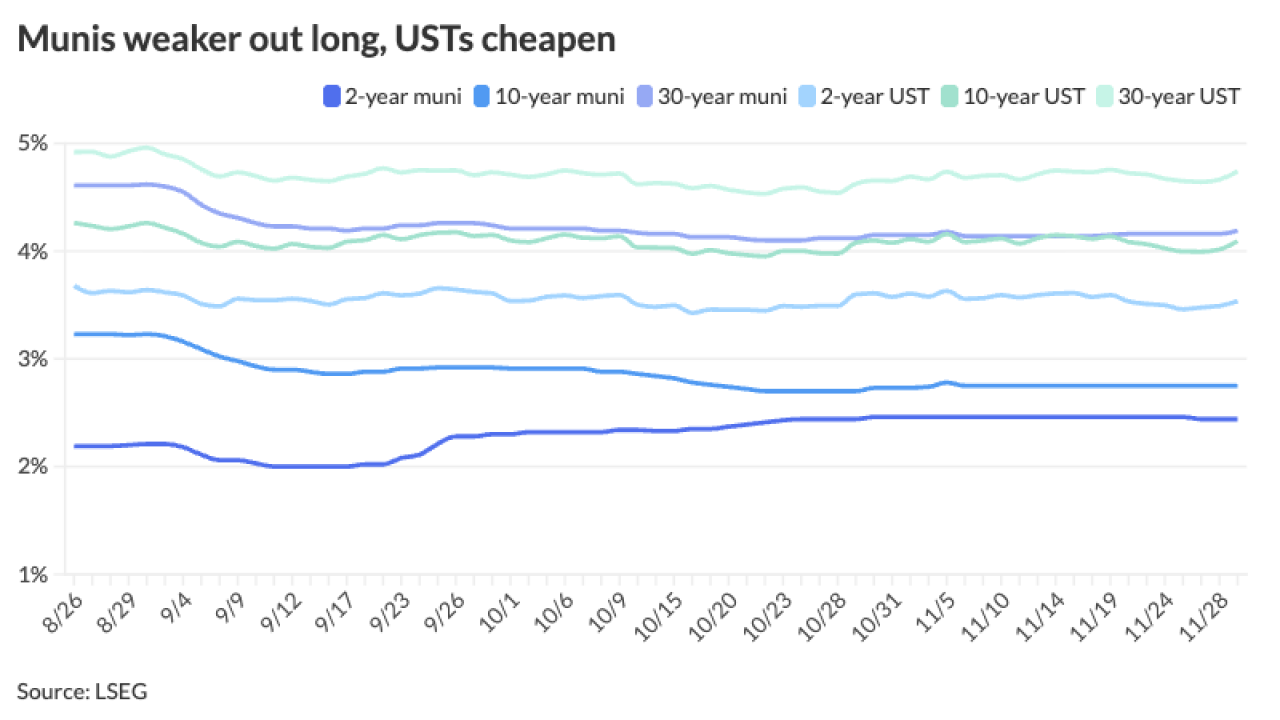The consumer confidence index decreased to 96.1 in November from an upwardly revised 101.4 last month, The Conference Board reported Tuesday.
The October index was originally reported as 100.9.
Economists polled by IFR Markets predicted a 98.0 reading for the index.
The present situation index slipped to 105.9 from 106.2, while the expectations index fell to 89.5 from 98.2.

“Consumers’ assessment of present-day conditions held steady, though consumers noted a moderation in business conditions, suggesting growth has slowed in Q4,” according to Lynn Franco, the group’s senior director of economic indicators. “Heading into 2021, consumers do not foresee the economy, nor the labor market, gaining strength. In addition, the resurgence of COVID-19 is further increasing uncertainty and exacerbating concerns about the outlook.”
Fewer consumers (33.5% vs. 34.4% last month) see business conditions as “bad,” while those seeing conditions as good also decreased in the month to 17.6% from 18.6% in the prior report.
There was virtually no change in the jobs category, with 26.7% seeing jobs as “plentiful” and 19.5% saying jobs are “hard to get.”
But, expectations fell, with 27.4% expecting better business conditions in a half year, down from 36.0% last month, and 19.8% expecting things to get worse, up from 15.9% saying that last month.
In other data released Tuesday, the S&P CoreLogic Case-Shiller national index rose 1.2% in September from a month earlier, while the 10-city index rose 1.3% and the 20-city grew 1.2% before seasonal adjustment.
On an annual basis the national index jumped 7.0% in September, compared with 5.8% in August, while the 10-city rose 6.2% (up from 4.9% in August) and the 20-city climbed 6.6% after being 5.3% higher a month earlier.
Also, the Federal Reserve Bank of Philadelphia’s November nonmanufacturing business survey showed regional activity rebounding to a positive 16.0 level from negative 15.9 in October, while at the firm level, the index soared to 25.3 from 5.3. The six months from now region index crept to 33.6 from 31.2, while at the firm level the expectations index gained to 47.3 from 35.1.
Meanwhile, the Federal Reserve Bank of Richmond’s manufacturing index fell to 15 in November from 29 in October, with shipments sliding to 20 from 30, new orders declining to 12 from 32, backlog of orders decreased to 11 from 14 and capacity utilization dropped to 14 from 262. The number of employees dropped to 13 from 23 and wages dipped to 25 from 26. Expected shipments held at 34, while new orders expectations grew to 33 from 24, backlog of orders rose to 15 from 9 and capacity utilization climbed to 29 from 22.
The Richmond Fed’s services survey’s revenues index fell to 13 in November from 19 in October, while demand rose to 15 from 8, local business conditions increased to 17 from 12, capital expenditures grew to 10 from 4, the number of employees dipped to 8 from 9 and wages gained to 19 from 11.
Looking six months ahead, the expectations for revenues index dropped to negative 2 from positive 19, demand held at 12, local business conditions fell to 4 from 18, capital expenditures rose to 20 from 15, the number of employees slid to 14 from 18 and wages dipped to 33 from 35.





